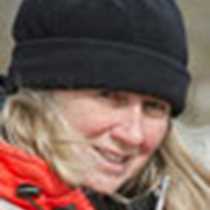Who were those who had gone before? Who had left a trail of signs that could be read in the land and the succession of plants but their lives remain a mystery still?
Thousands of rounded cobbles flecked with black and white, murmured as each wave withdrew from the shore. Rocky headlands embraced Granite Cove imparting the illusion of wildness or of solitude. Alders, bright in springtime green, skirted the edges hiding the bases of tall dark hemlock and spiky spruce. Two hundred years ago, George Vancouver had landed here. Had his men seen fit to explore beyond the shore? Or did they simply negotiate in trade with native peoples who met them there? They left no sign of passing, only written word.
But inside the forest, a more complicated story began to unfold. Sliced by minor faults, the island mandated our path be one of rising and falling steps, over ridges and into narrow clefts. Around us the sounds of birds filled the air. Each pause produced a paragraph for our still unfinished yarn. Small diameter stumps, plentiful in number, left gaps between older hemlock trees. Had there been a need for firewood here? Fingerling trees, packed densely together, seemed to indicate a disturbance in the otherwise monotonous life of the woods. Observant eyes, withdrawn from the necessity of watching the placement of feet at the end of a steep traverse, were able to sleuth the source. A massive bridge capable of moving a vehicle of considerable weight had crumbled into ruins at just the spot where the successional growth led over a precipitous drop. Hidden beyond, two tumbledown huts revealed no more than a hint of camouflage green and the certainty of human occupation sometime in the past.
We stood at the edge of a rocky ridge staring out to sea, to where the narrow finger of Cape Spencer stretched out to tickle the edges of the Pacific, beckoning it too to share the beauty of the Fairweather Range or the icy countenance of Brady Glacier pouring from the mountain flanks. A cement platform here where the view was best had supported others who had trained their binoculars on movements in the water below. And then the reason for it all came clear. Rusty now, a giant six-inch cannon stands, its barrel still trained to defend the Sound from enemy submarines. Close to sixty years have passed and our story has no end. Although the outline is there for all to read, the true tale is hidden in the memories of men who passed long days listening to the waves on the shore.




